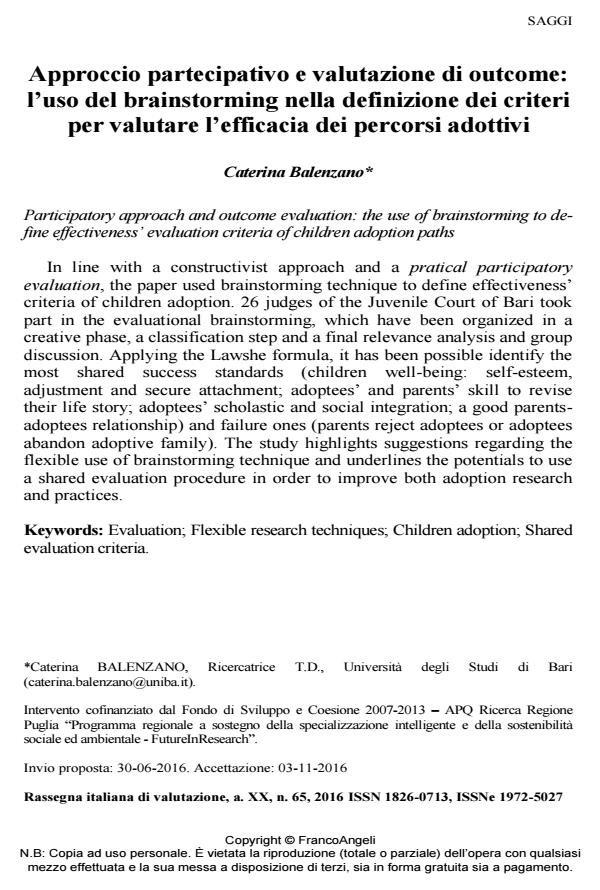Participatory approach and outcome evaluation: the use of brainstorming to define effectiveness’ evaluation criteria of children adoption paths
Journal title RIV Rassegna Italiana di Valutazione
Author/s Caterina Balenzano
Publishing Year 2017 Issue 2016/65
Language Italian Pages 20 P. 7-26 File size 601 KB
DOI 10.3280/RIV2016-065002
DOI is like a bar code for intellectual property: to have more infomation
click here
Below, you can see the article first page
If you want to buy this article in PDF format, you can do it, following the instructions to buy download credits

FrancoAngeli is member of Publishers International Linking Association, Inc (PILA), a not-for-profit association which run the CrossRef service enabling links to and from online scholarly content.
In line with a constructivist approach and a pratical participatory evaluation, the paper used brainstorming technique to define effectiveness’ criteria of children adoption. 26 judges of the Juvenile Court of Bari took part in the evaluational brainstorming, which have been organized in a creative phase, a classification step and a final relevance analysis and group discussion. Applying the Lawshe formula, it has been possible identify the most shared success standards (children well-being: self-esteem, adjustment and secure attachment; adoptees’ and parents’ skill to revise their life story; adoptees’ scholastic and social integration; a good parents-adoptees relationship) and failure ones (parents reject adoptees or adoptees abandon adoptive family). The study highlights suggestions regarding the flexible use of brainstorming technique and underlines the potentials to use a shared evaluation procedure in order to improve both adoption research and practices.
Keywords: Evaluation; Flexible research techniques; Children adoption; Shared evaluation criteria.
Caterina Balenzano, Approccio partecipativo e valutazione di outcome: l’uso del brainstorming nella definizione dei criteri per valutare l’efficacia dei percorsi adottivi in "RIV Rassegna Italiana di Valutazione" 65/2016, pp 7-26, DOI: 10.3280/RIV2016-065002